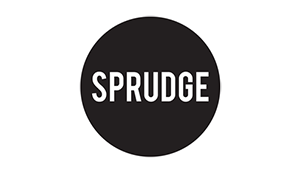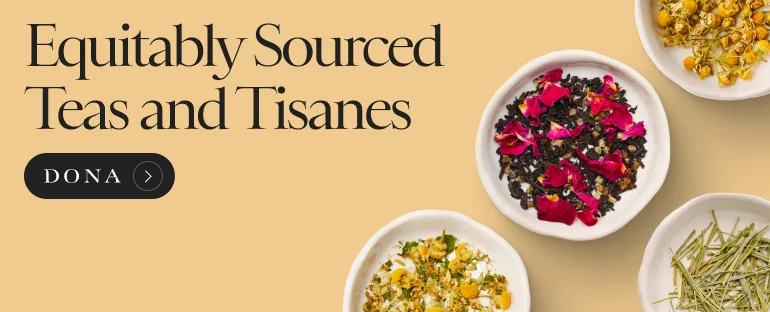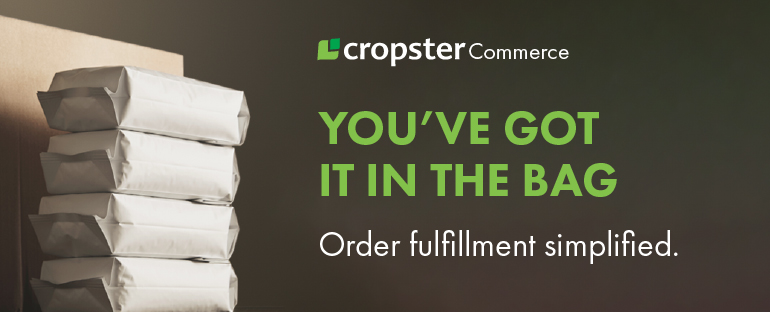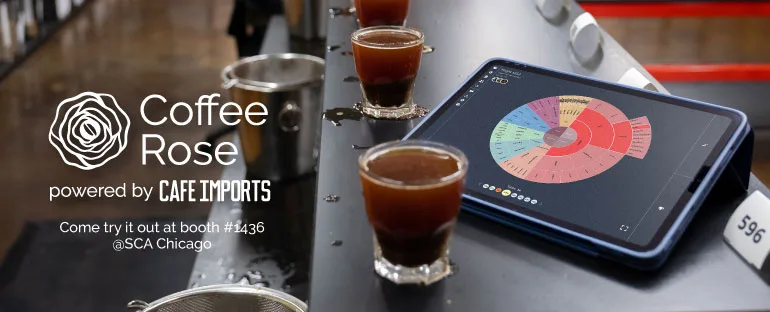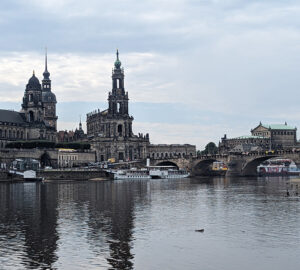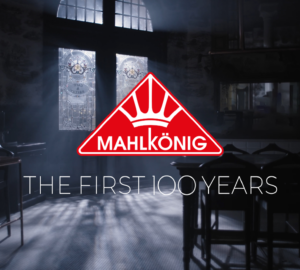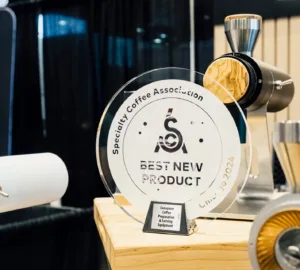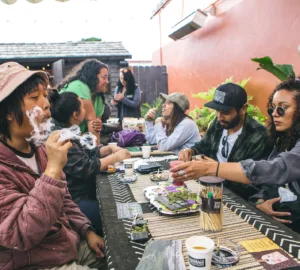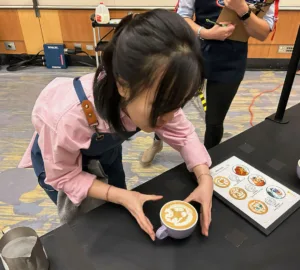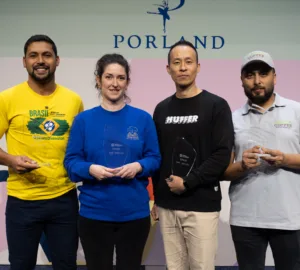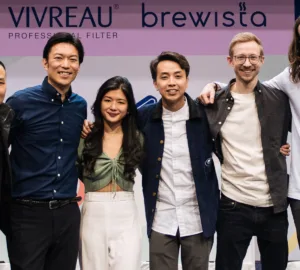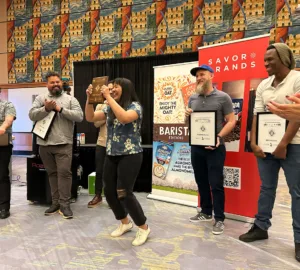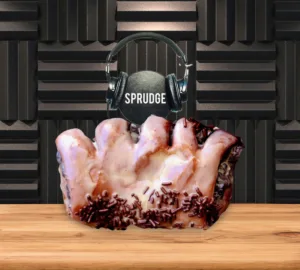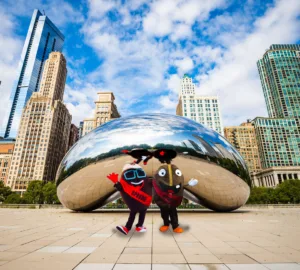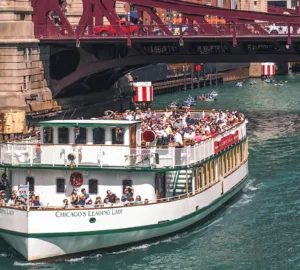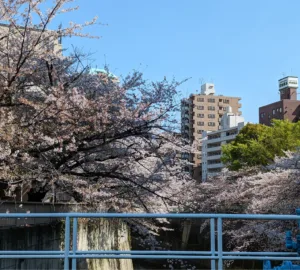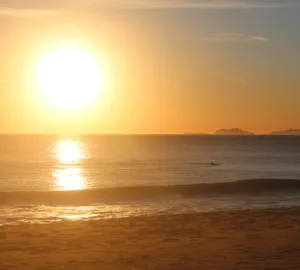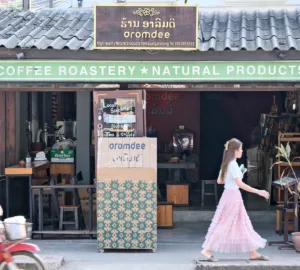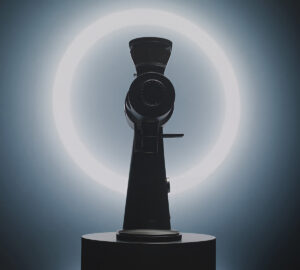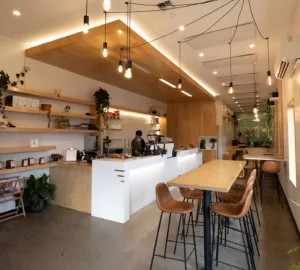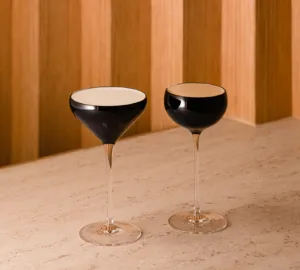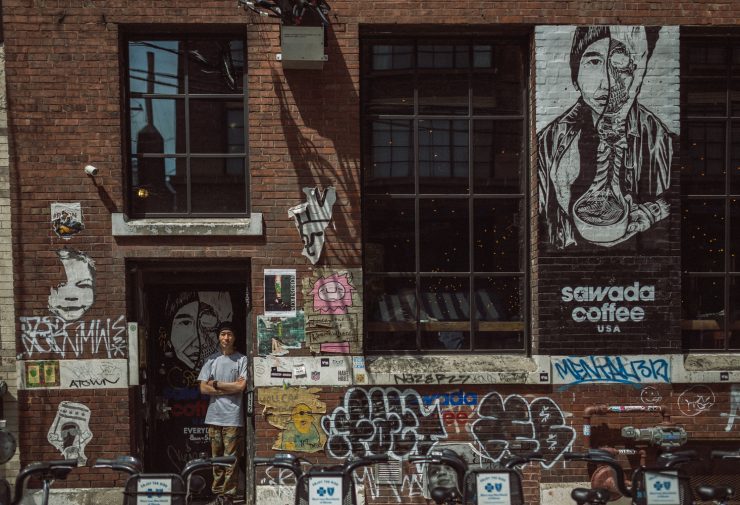
The timing couldn’t have been better; Hiroshi Sawada was in Chicago for the weekend, tending to recipes, food, and business, when I reached out to Sawada Coffee. The awesome folks at Hogsalt Hospitality, owners of West Loop staples Au Cheval and Green Street Smoked Meats, put us together with a translator. A little catch-up, for those who aren’t familiar: Hiroshi Sawada, Sawada Coffee’s namesake, is an acclaimed Japanese latte artisan and coffee fanatic (and the 2008 Free Pour Latte Art World Champion). This past December, he and Hogsalt collaborated together to open Sawada Coffee in Chicago’s West Loop.
Sawada himself comes off just as hard as his caricatured logo showcases. Yet that grit and determination is directed solely at coffee. Outside his craft, he’s humble, shy, soft, and fantastically kind. When he arrives in Chicago, he tends bar and chills with the baristas; crew and customers alike pine for his next visit. His other passions? Skateboarding—though thanks to outdated laws in Chicago, he won’t attempt it there—and documenting moments through an Olympus OM-D with the gentle care you’d expect when he’s behind bar.
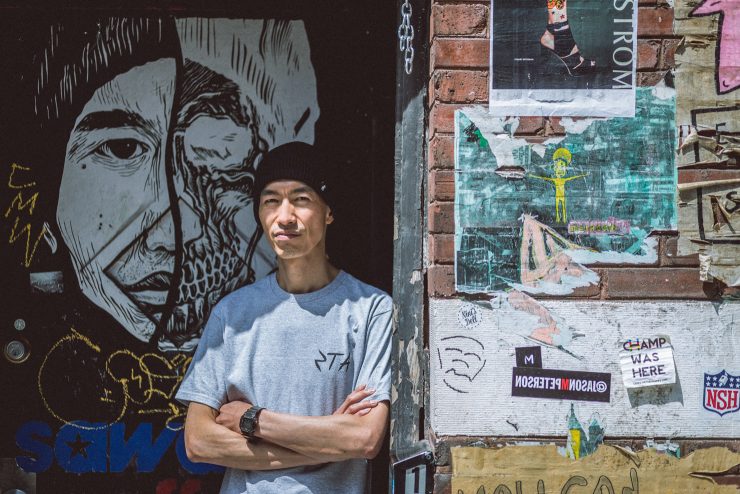
Hogsalt and Sawada came together out of persistent luck, and his caring touch is exactly what helped bring the concept of Sawada Coffee to life. Brendan Sodikoff and Jean Tomaro of Hogsalt were in Japan—fantasizing about starting their own coffee shop in Chicago—and sought out Sawada’s Streamer Coffee Company cafe for inspiration. They were in awe of the quality and beauty of the team’s coffees, even without Sawada present. Once back Stateside, they reached out, translating their note to Japanese. Unsure of exactly how to begin a coffee shop, the two were positive of one thing: they had to have Sawada train their staff on how to do it properly. He agreed, came to train, and was blown away by the quality level of food and service for which the Hogsalt restaurants were known.
To the lanky, unassuming latte artist, Chicago was intriguing; he knew of La Colombe’s investment in the city alongside Intelligentsia Coffee’s fame and felt that the city’s broad shoulders held up a diverse coffee culture. It was a community that would be open to two powerhouse cultures melding together: Tokyo and Chicago, East and West.
The team got together and began searching for the perfect spot. According to Sawada, the West Loop was appealing because it was “such a culturally rich, restaurant-oriented neighborhood that I just wanted to be a part of that culture.” Hogsalt’s pedigree opened up a lot of doors, and as luck would have it, they had the perfect space: a terrible black room, without any natural light, where Green Street stored their beer.
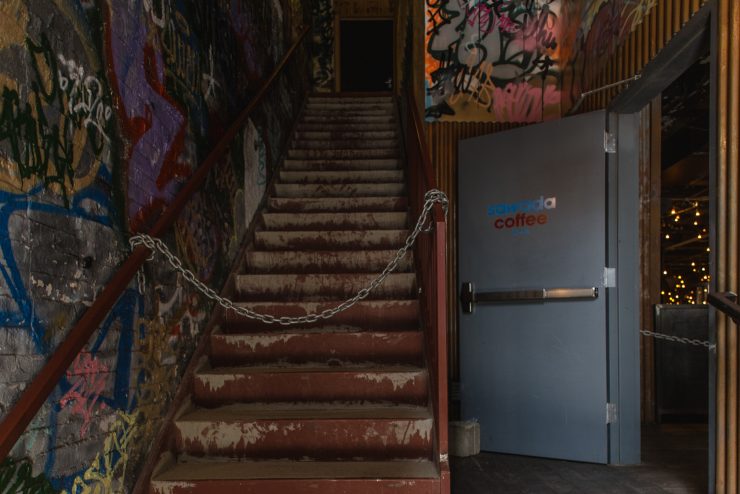
Obviously some work had to be done, but even initially, the cohesion of Green Street Smoked Meats and the West Loop’s edgy, industrial heritage with Sawada’s love of atmosphere and skateboarding made perfect sense. Throw in graffitied walls, a great deal of foot traffic, a Divvy bike-share station, and the loaded-with-international-guests Soho House hotel across the street, and Sawada was set to go. Interior walls were knocked out, revealing a huge open space that leads down into swaths of tables and Green Street’s counters, exterior windows were put in place. Sawada-adorned skateboards spill over the walls in back, with an old-school pinball machine up against the bar (“The Getaway”, Williams, 1992). Even the Hario pour-over station is doused in black, skulls, and a board.
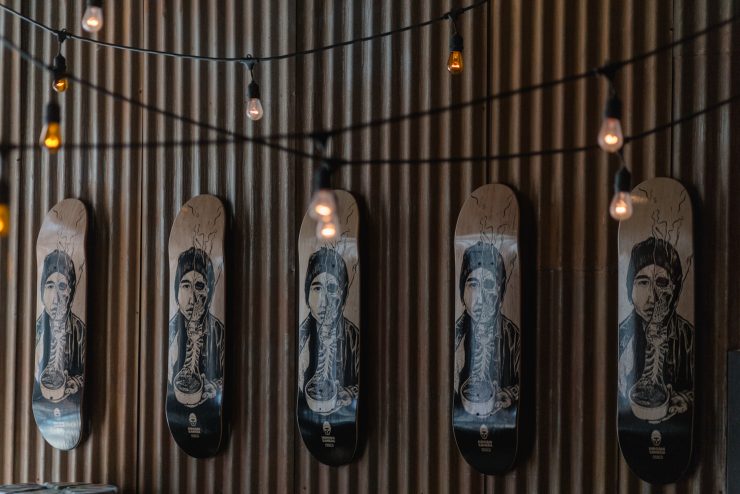
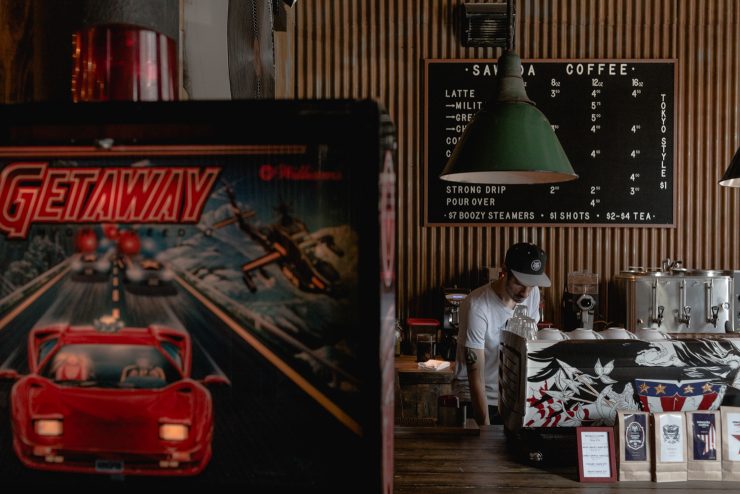
The real beauty of Sawada Coffee comes in the form of a partnership with local craft specialists Metropolis Coffee. Despite having access, of course, to Streamer Coffee, Sawada and Hogsalt wanted the coffee in Chicago to be fresh from Chicago. Therefore, Sawada, Sodikoff, and Tomaro worked closely with Tony Dreyfuss at Metropolis to develop Project X—Sawada’s special blend, a rich, low-acidity coffee designed to resemble the flavors and characteristics of his signature brand from Tokyo, but with a Midwestern twist. Along with the beans, a shop from such a pedigree comes with the associated bells and whistles: a customized Nuova Simonelli Black Eagle machine, Hogsalt’s own Doughnut Vault doughnuts and baked goods, Mahlkönig Guatemala grinders, and a skateboard inspired pour-over station.
The menu is as basic as it can get, outside of the additional tea drinks headed up by the Military Latte, a matcha-style drink mixed with espresso. Under Sawada’s guidance, Sawada Coffee has developed a cold brew mixed with either shōchū, a special Japanese liquor, or kuromitsu, a Japanese simple sugar, both drinkable at every occasion. Tomaro explains, “Guests’ favorite drinks at Sawada Coffee are the Japanese-influenced items like the green tea latte, the Military Latte, and now the Tokyo-style cold brew.” These items are a combination of Sawada’s experience and knowledge that are then mixed with local and accessible ingredients.
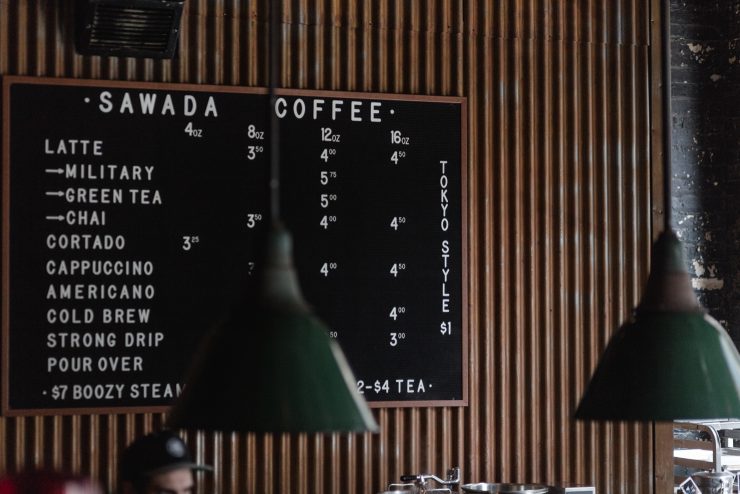
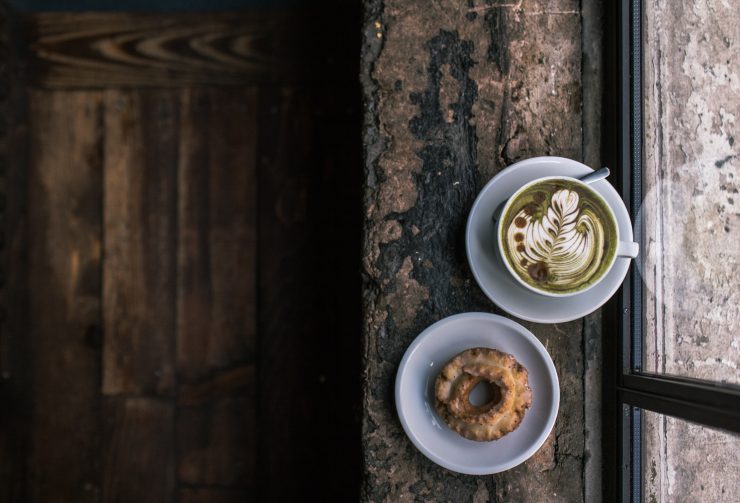
Sawada Coffee’s influence over Chicago culture is making itself known, from a proliferation of matcha-style drinks to an exploration in diversity in flavors and tastes. Sodikoff and Tomaro’s values of tradition, quality, and generosity seem to be syncing up perfectly with Sawada and the West Loop (#westloopisbestloop). Unfortunately, for the Second City, we may soon start having to share Sawada’s US visits with New York City—as the team have a concept planned for the East Coast.
My final thought is please, let Chicago relax its repressive laws against skateboarding, so that we may see Hiroshi Sawada around town a bit more frequently.
Adam Arcus (@aarcusphoto) is a journalist and photographer based in Chicago. Read more Adam Arcus on Sprudge.
